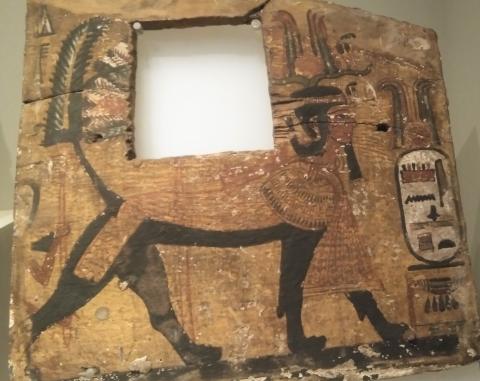Amenhotep the Lion

The remains of this painted wooden chair's armrest is from the Egyptian New Kingdom (about 1520 BC) and was buried near Thebes, but is now displayed at Liverpool’s World Museum. Egyptian kings liked to be depicted as sphinxes to show their strength, power and divine nature. With his lion’s body and kingly head, Pharaoh Amenhotep I is wearing his horned and feathered atef crown.
If Amenhotep I is dated correctly (1525-1506BC), he may have been the Pharaoh who ordered the deaths of the male Hebrew children, from whom Moses was delivered in his reed basket. This lion-like king was therefore tricked into raising the liberator of the Hebrews in his own palace. Later, Balaam prophecies in in Numbers 23:23-25:
“For there is no sorcery against Jacob,
Nor any divination against Israel.
It now must be said of Jacob
And of Israel, ‘Oh, what God has done!’
Look, a people rises like a lioness,
And lifts itself up like a lion;
It shall not lie down until it devours the prey,
And drinks the blood of the slain.”
The devil may roar like a lion and pagan kings may depict themselves as such, but here God decrees His people to be the more leonine, for it was from them that Lion of Judah would come. By the word of His terrifying mouth, poor tabby cat Amenhotep is soundly devoured, his heirs washed away in the Red Sea and his slaves released.
“Safe?” said Mr. Beaver; “don’t you hear what Mrs. Beaver tells you? Who said anything about safe? ‘Course he isn’t safe. But he’s good. He’s the King, I tell you.”
― The Lion, the Witch and the Wardrobe
- Log in to post comments


 Sunday Worship 10.45am & 6.00pm
Sunday Worship 10.45am & 6.00pm